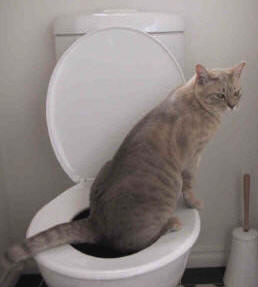Why You Should Never Flush Cat Poop Down Your Toilet - Critical Information
Why You Should Never Flush Cat Poop Down Your Toilet - Critical Information
Blog Article
We have stumbled on this article about How to Dispose of Cat Poop and Litter Without Plastic Bags directly below on the internet and thought it made perfect sense to discuss it with you over here.
:max_bytes(150000):strip_icc()/0S1A1090-49a8e2c66f8e41d6901f2559787a7f24.jpg)
Intro
As cat proprietors, it's vital to bear in mind how we deal with our feline good friends' waste. While it may seem convenient to flush feline poop down the commode, this technique can have destructive consequences for both the environment and human health.
Alternatives to Flushing
Fortunately, there are safer and more liable methods to throw away feline poop. Consider the adhering to options:
1. Scoop and Dispose in Trash
The most usual technique of getting rid of cat poop is to scoop it right into a biodegradable bag and toss it in the trash. Make sure to use a specialized litter scoop and dispose of the waste immediately.
2. Usage Biodegradable Litter
Choose naturally degradable pet cat litter made from materials such as corn or wheat. These trashes are eco-friendly and can be safely thrown away in the garbage.
3. Hide in the Yard
If you have a yard, consider burying cat waste in an assigned area away from vegetable gardens and water sources. Make sure to dig deep sufficient to avoid contamination of groundwater.
4. Set Up a Pet Waste Disposal System
Purchase a family pet waste disposal system particularly designed for cat waste. These systems make use of enzymes to break down the waste, lowering smell and environmental impact.
Wellness Risks
Along with environmental problems, purging cat waste can additionally position health risks to people. Cat feces may contain Toxoplasma gondii, a parasite that can trigger toxoplasmosis-- a potentially extreme ailment, especially for expectant females and people with weakened immune systems.
Environmental Impact
Flushing pet cat poop presents hazardous pathogens and bloodsuckers into the water supply, presenting a significant danger to marine environments. These contaminants can negatively affect aquatic life and compromise water quality.
Final thought
Liable pet possession expands beyond providing food and shelter-- it also includes appropriate waste administration. By avoiding flushing feline poop down the bathroom and choosing alternate disposal techniques, we can reduce our environmental footprint and shield human wellness.
Why Can’t I Flush Cat Poop?
It Spreads a Parasite
Cats are frequently infected with a parasite called toxoplasma gondii. The parasite causes an infection called toxoplasmosis. It is usually harmless to cats. The parasite only uses cat poop as a host for its eggs. Otherwise, the cat’s immune system usually keeps the infection at low enough levels to maintain its own health. But it does not stop the develop of eggs. These eggs are tiny and surprisingly tough. They may survive for a year before they begin to grow. But that’s the problem.
Our wastewater system is not designed to deal with toxoplasmosis eggs. Instead, most eggs will flush from your toilet into sewers and wastewater management plants. After the sewage is treated for many other harmful things in it, it is typically released into local rivers, lakes, or oceans. Here, the toxoplasmosis eggs can find new hosts, including starfish, crabs, otters, and many other wildlife. For many, this is a significant risk to their health. Toxoplasmosis can also end up infecting water sources that are important for agriculture, which means our deer, pigs, and sheep can get infected too.
Is There Risk to Humans?
There can be a risk to human life from flushing cat poop down the toilet. If you do so, the parasites from your cat’s poop can end up in shellfish, game animals, or livestock. If this meat is then served raw or undercooked, the people who eat it can get sick.
In fact, according to the CDC, 40 million people in the United States are infected with toxoplasma gondii. They get it from exposure to infected seafood, or from some kind of cat poop contamination, like drinking from a stream that is contaminated or touching anything that has come into contact with cat poop. That includes just cleaning a cat litter box.
Most people who get infected with these parasites will not develop any symptoms. However, for pregnant women or for those with compromised immune systems, the parasite can cause severe health problems.
How to Handle Cat Poop
The best way to handle cat poop is actually to clean the box more often. The eggs that the parasite sheds will not become active until one to five days after the cat poops. That means that if you clean daily, you’re much less likely to come into direct contact with infectious eggs.
That said, always dispose of cat poop in the garbage and not down the toilet. Wash your hands before and after you clean the litter box, and bring the bag of poop right outside to your garbage bins.
https://trenchlesssolutionsusa.com/why-cant-i-flush-cat-poop/

As an enthusiastic reader on Can You Flush Cat Poop Down The Toilet?, I imagined sharing that article was appropriate. Are you aware of another individual who is involved in the subject? Be sure share it. Many thanks for your time. Don't forget to stop by our website back soon.
Schedule Estimate Report this page